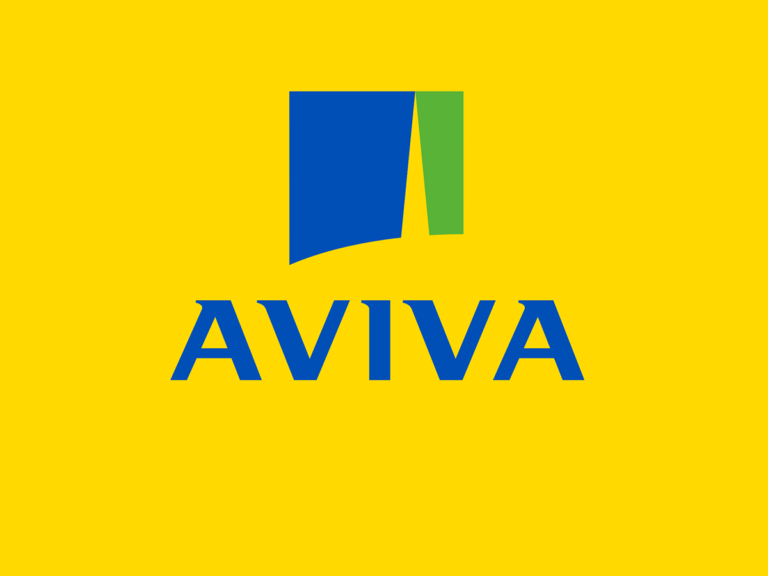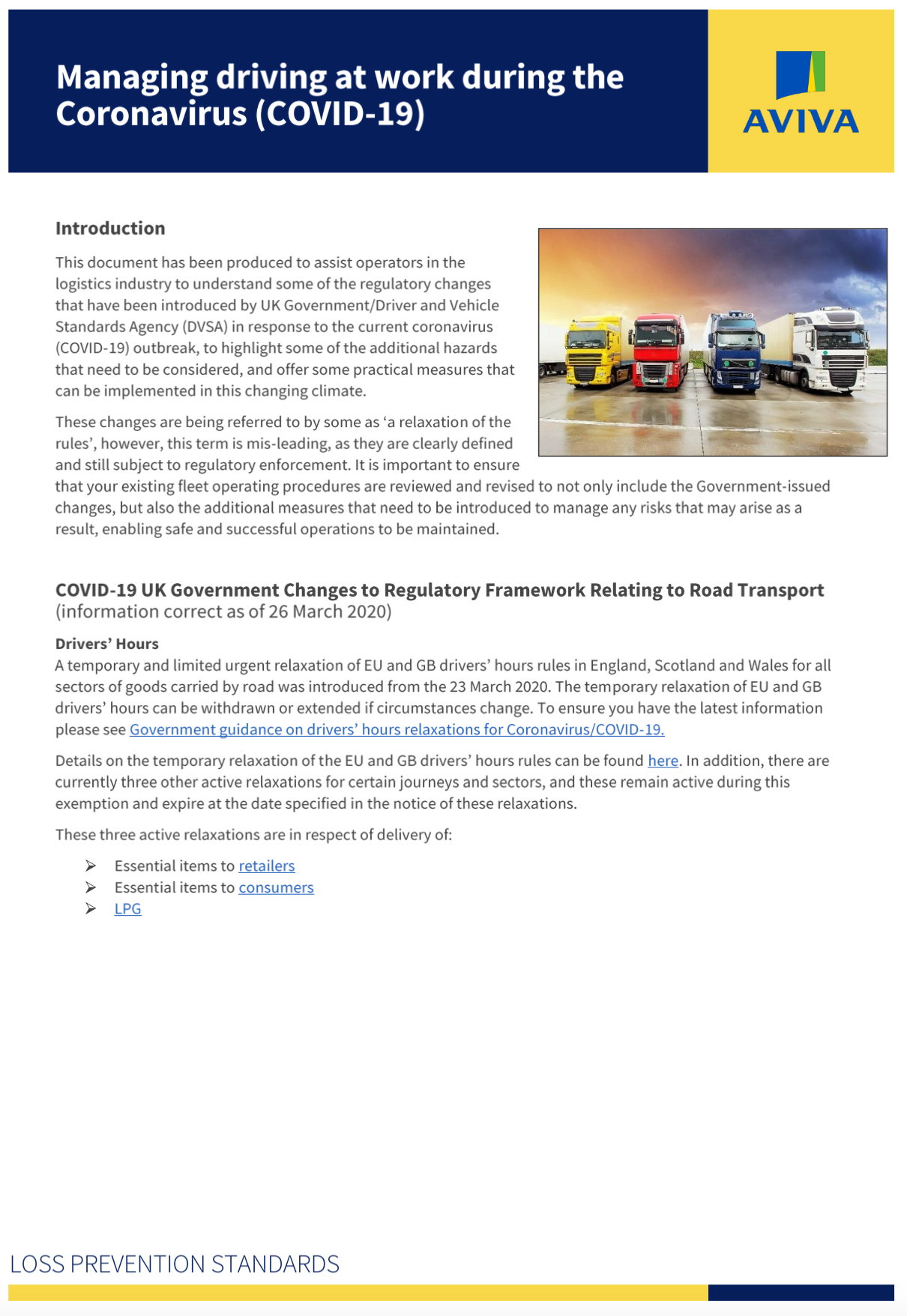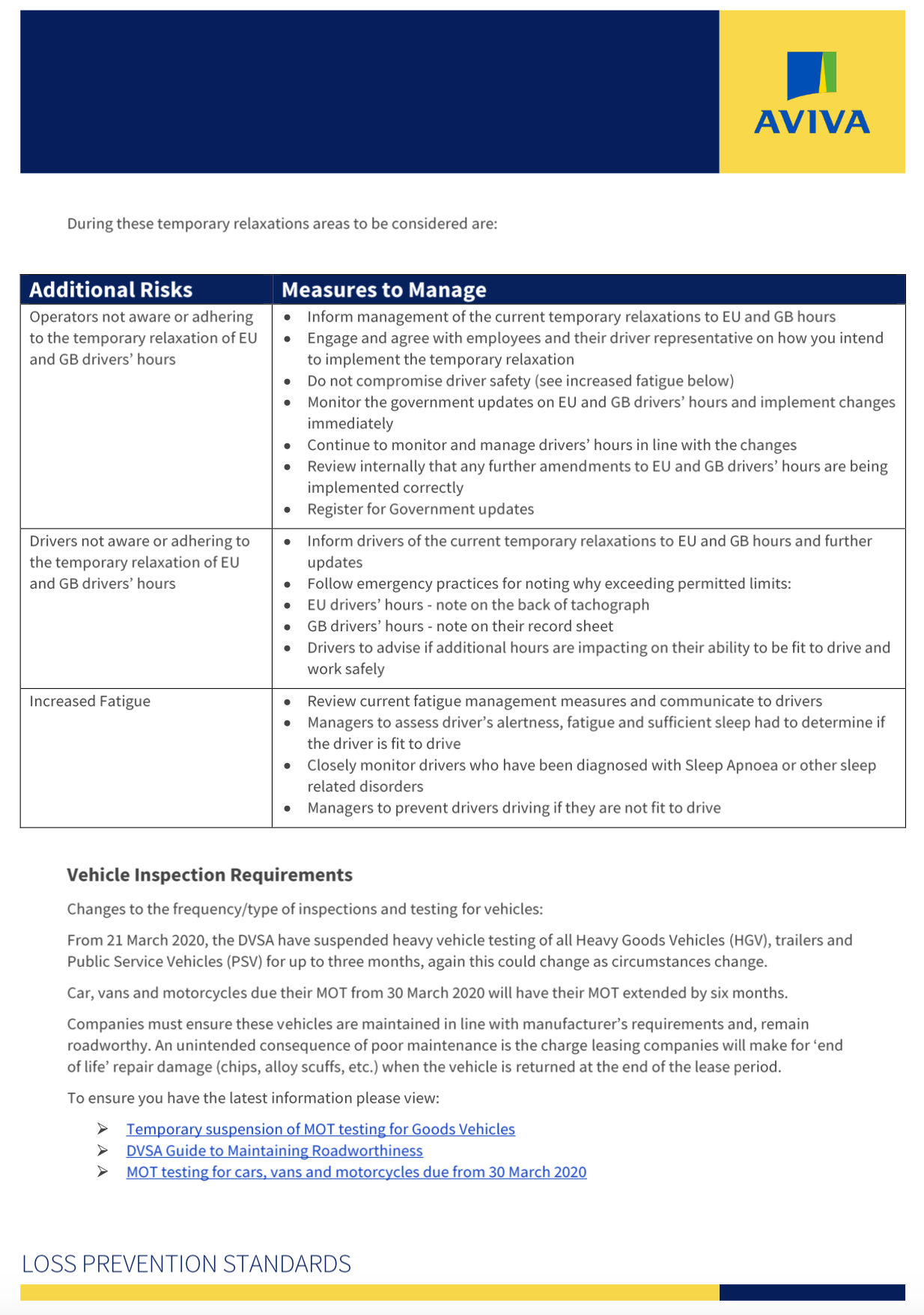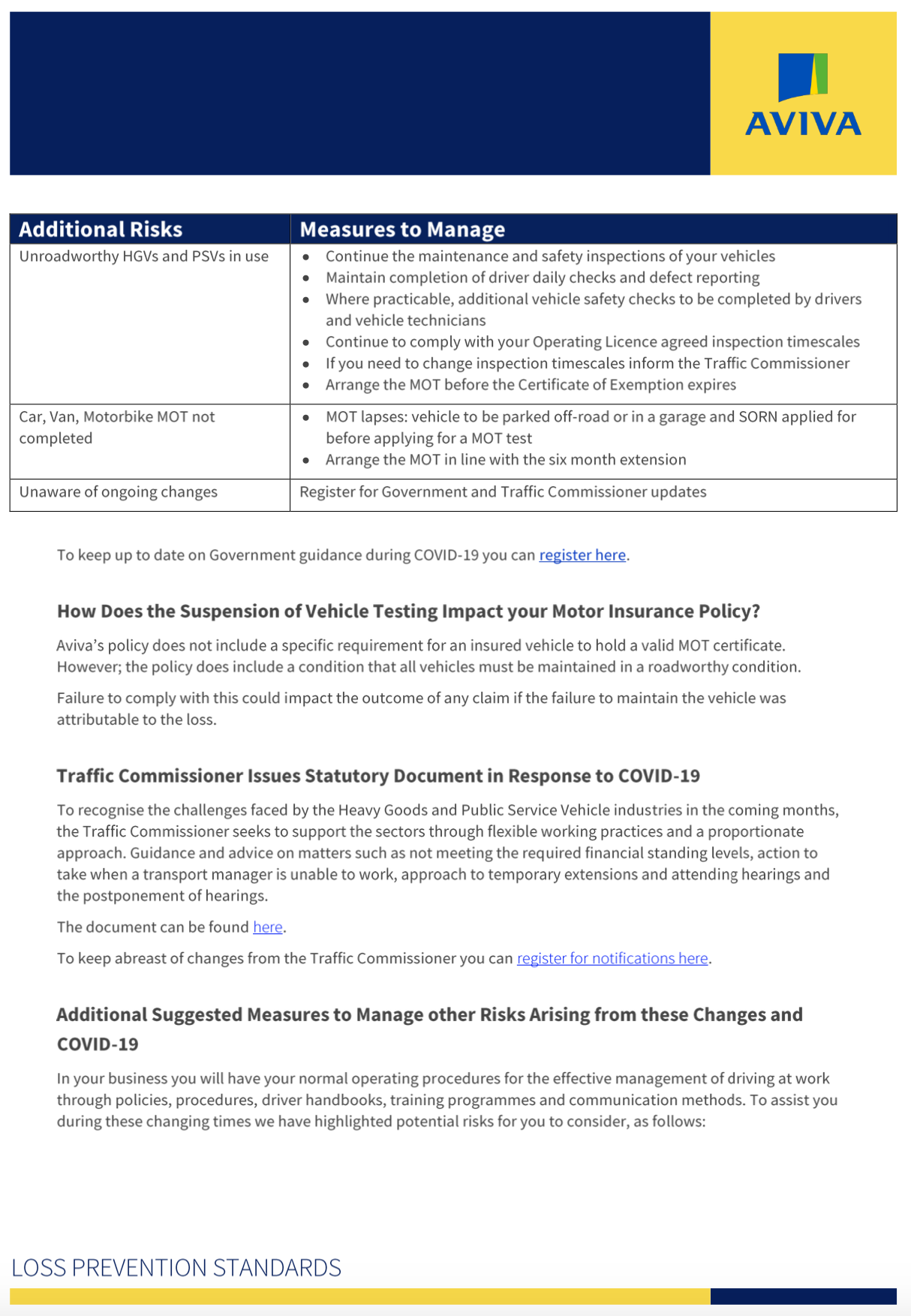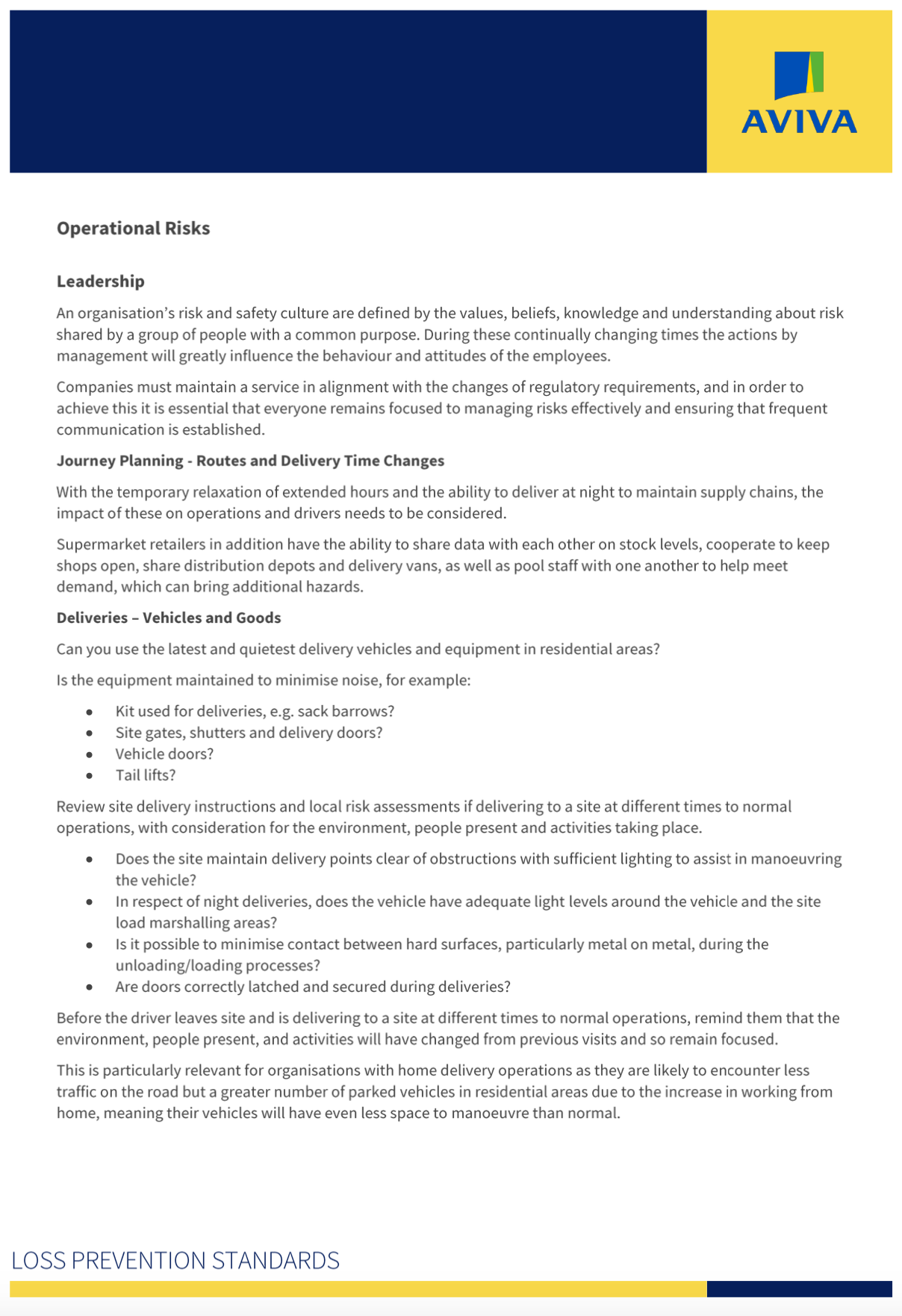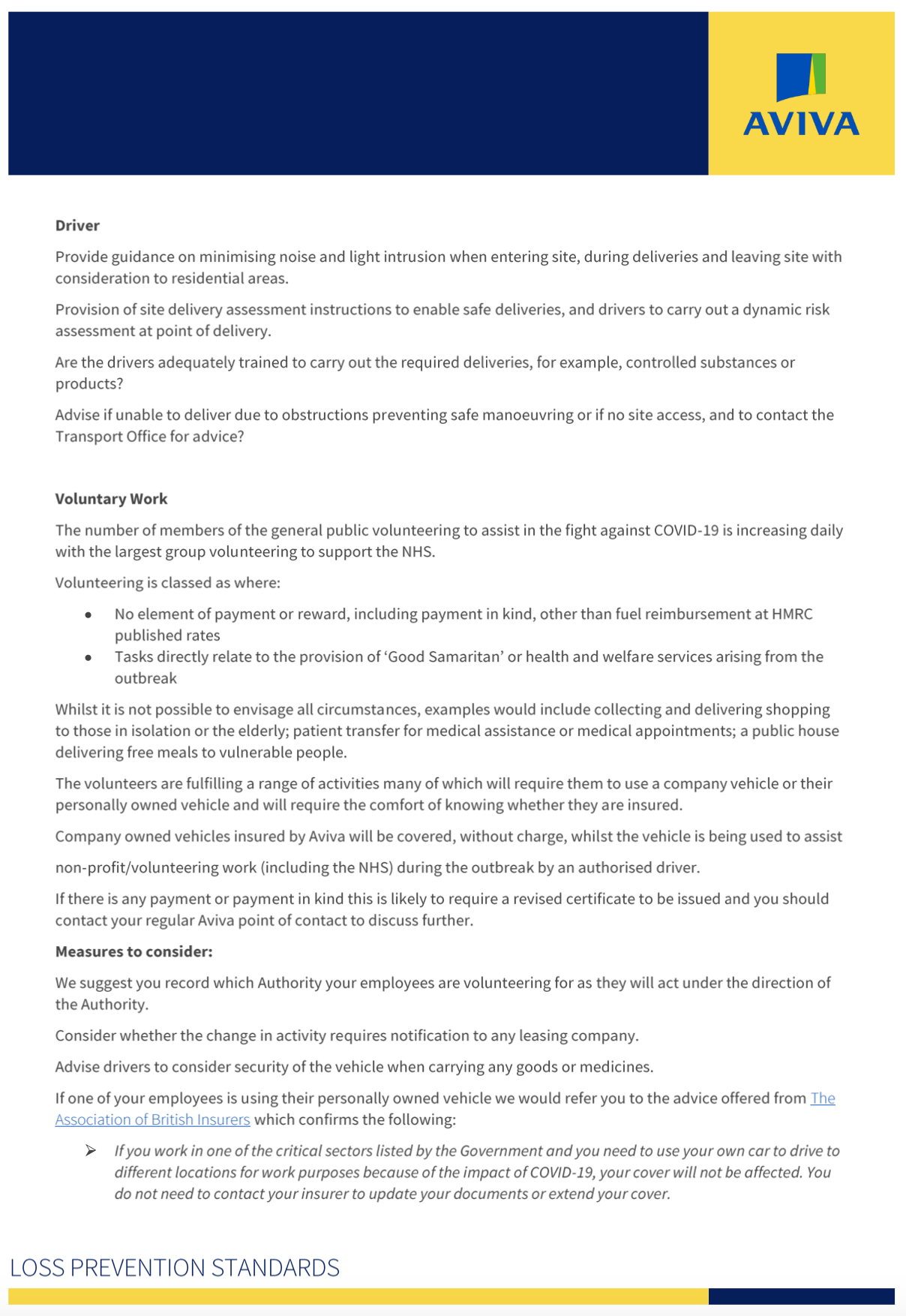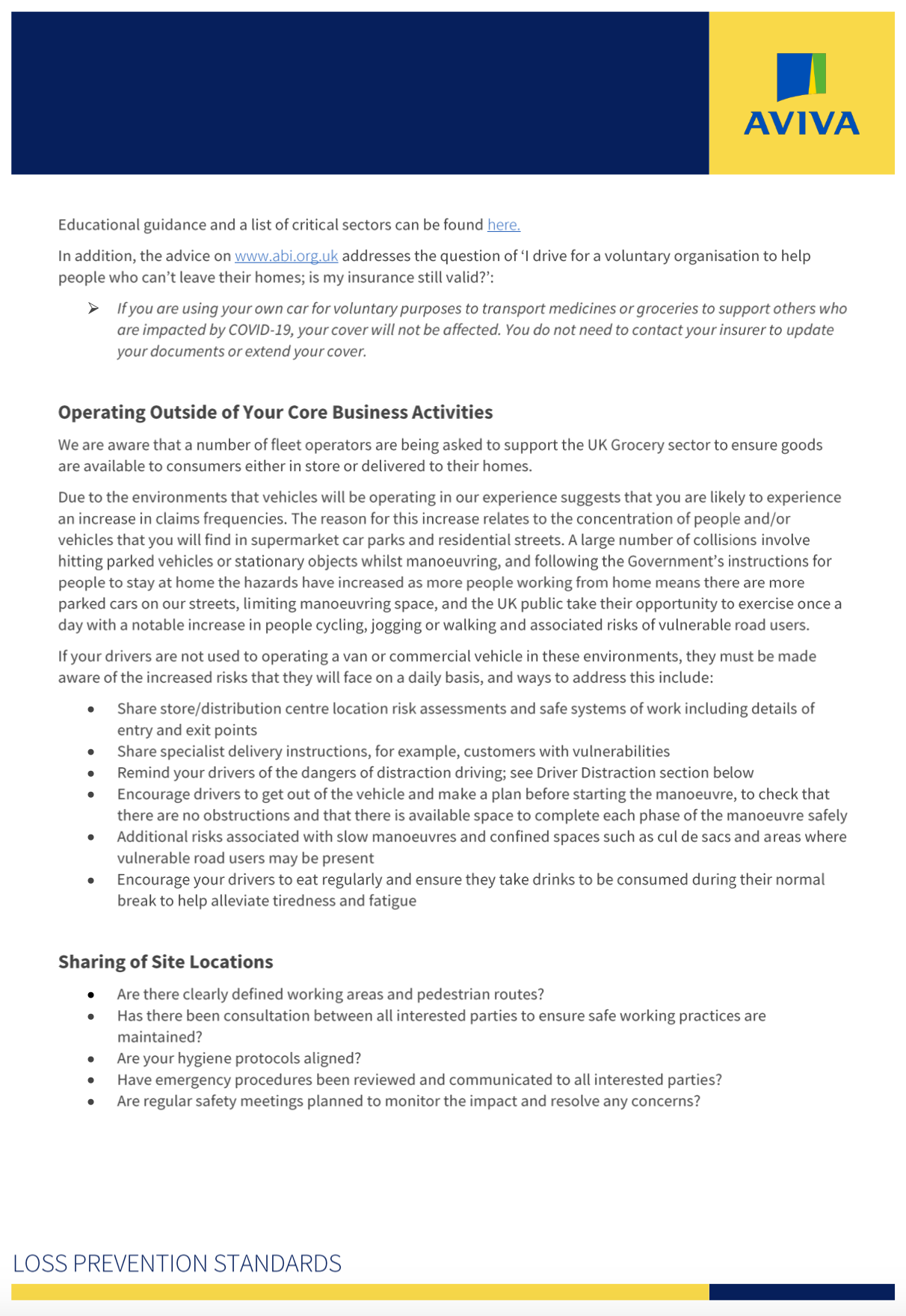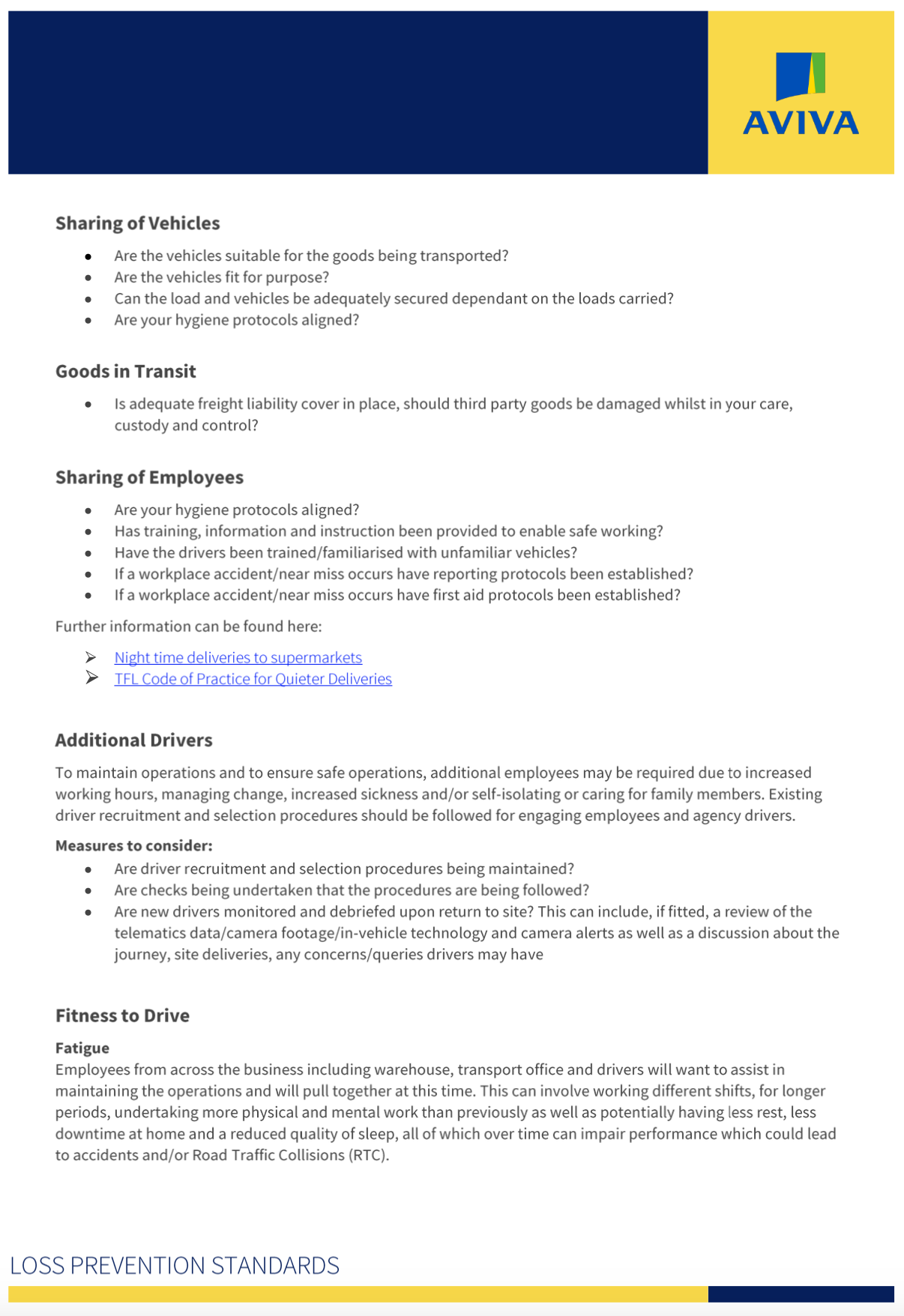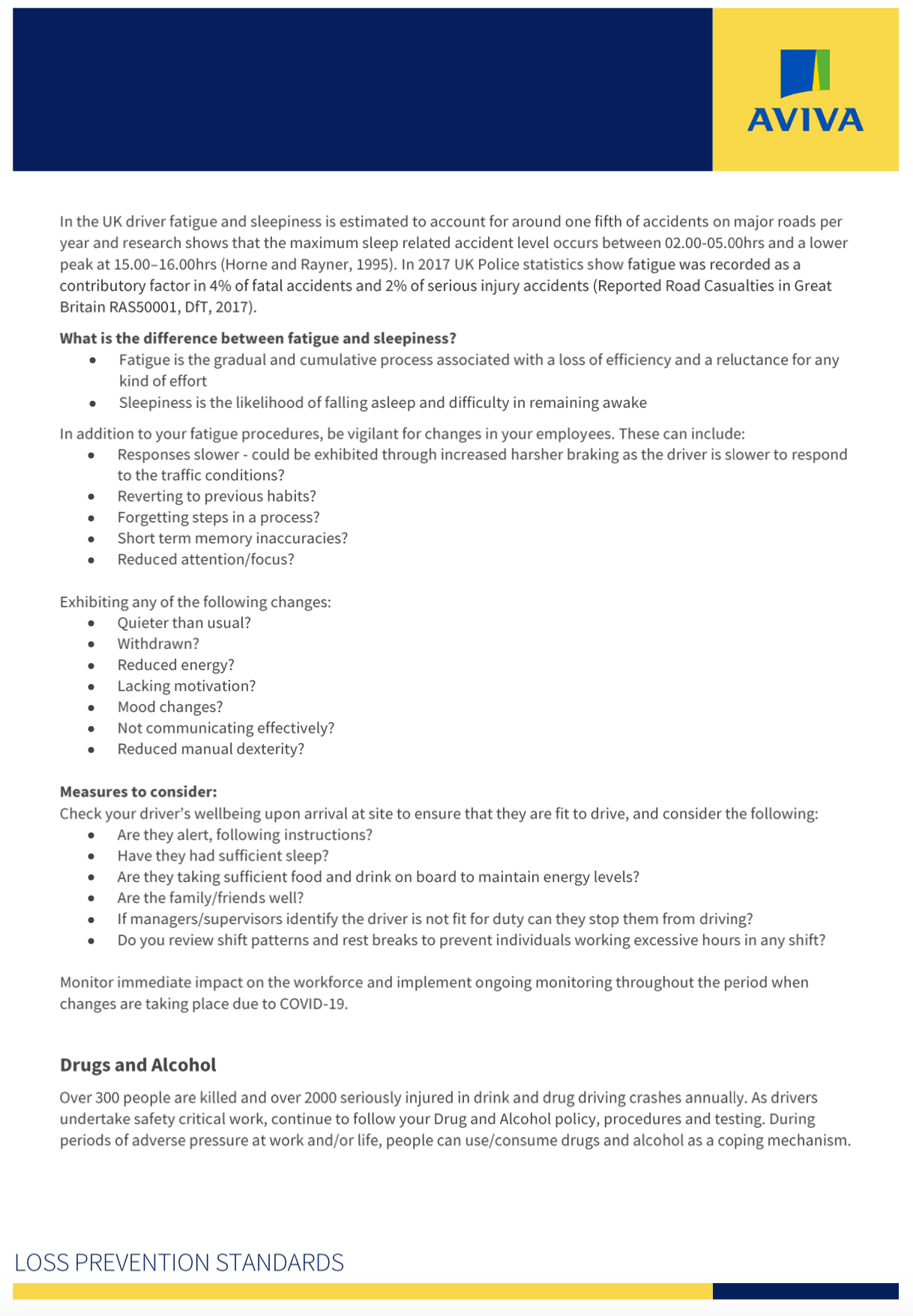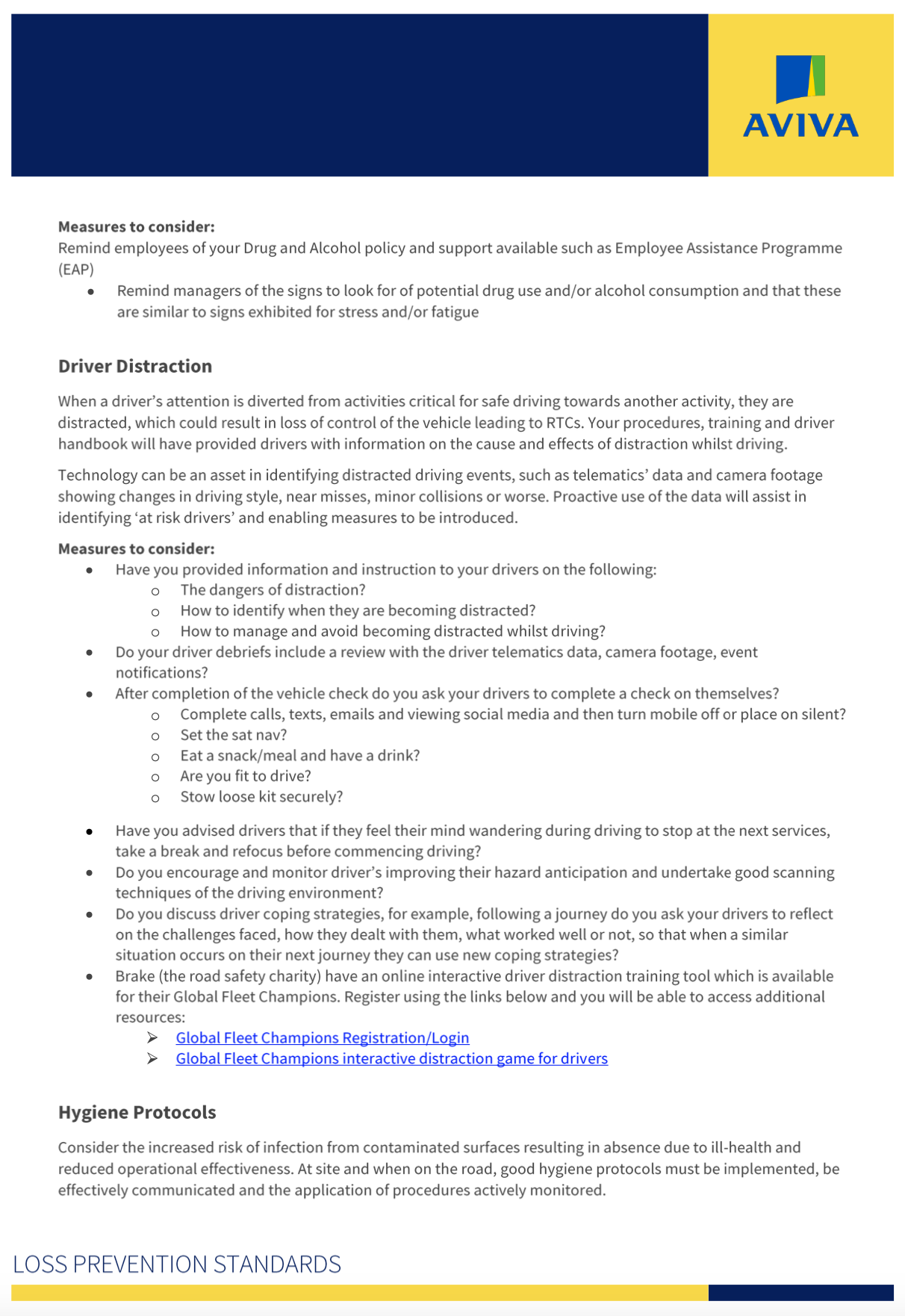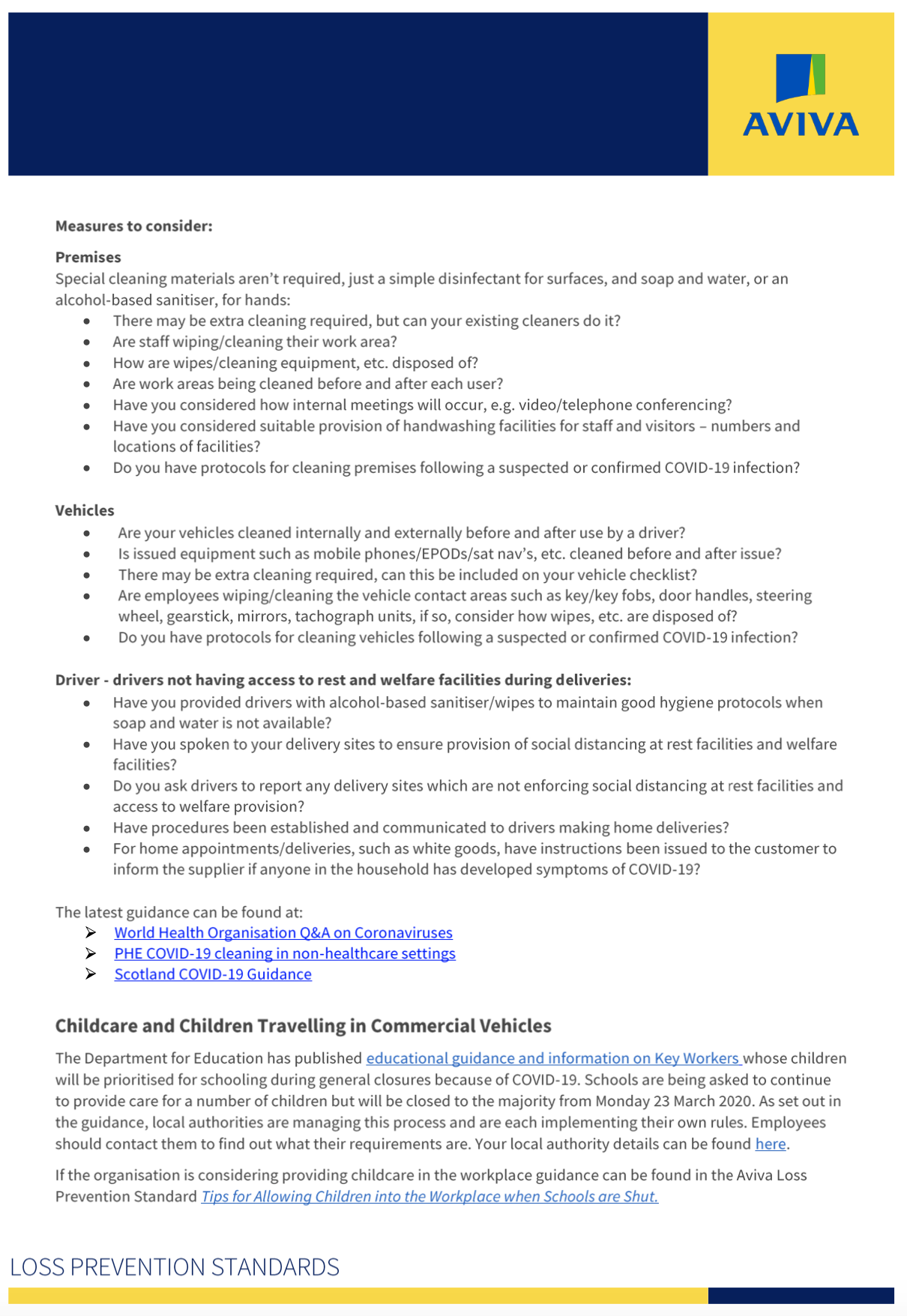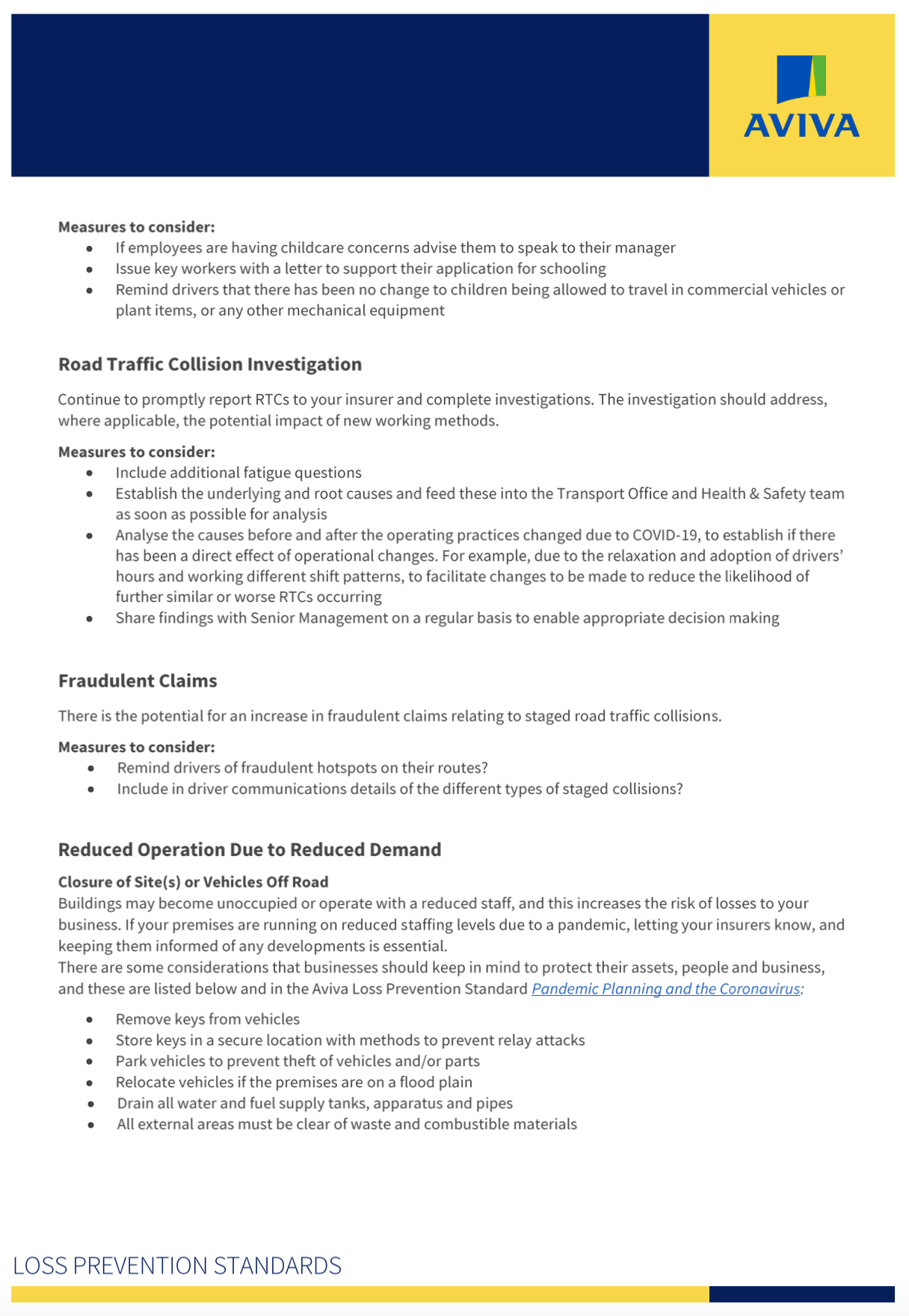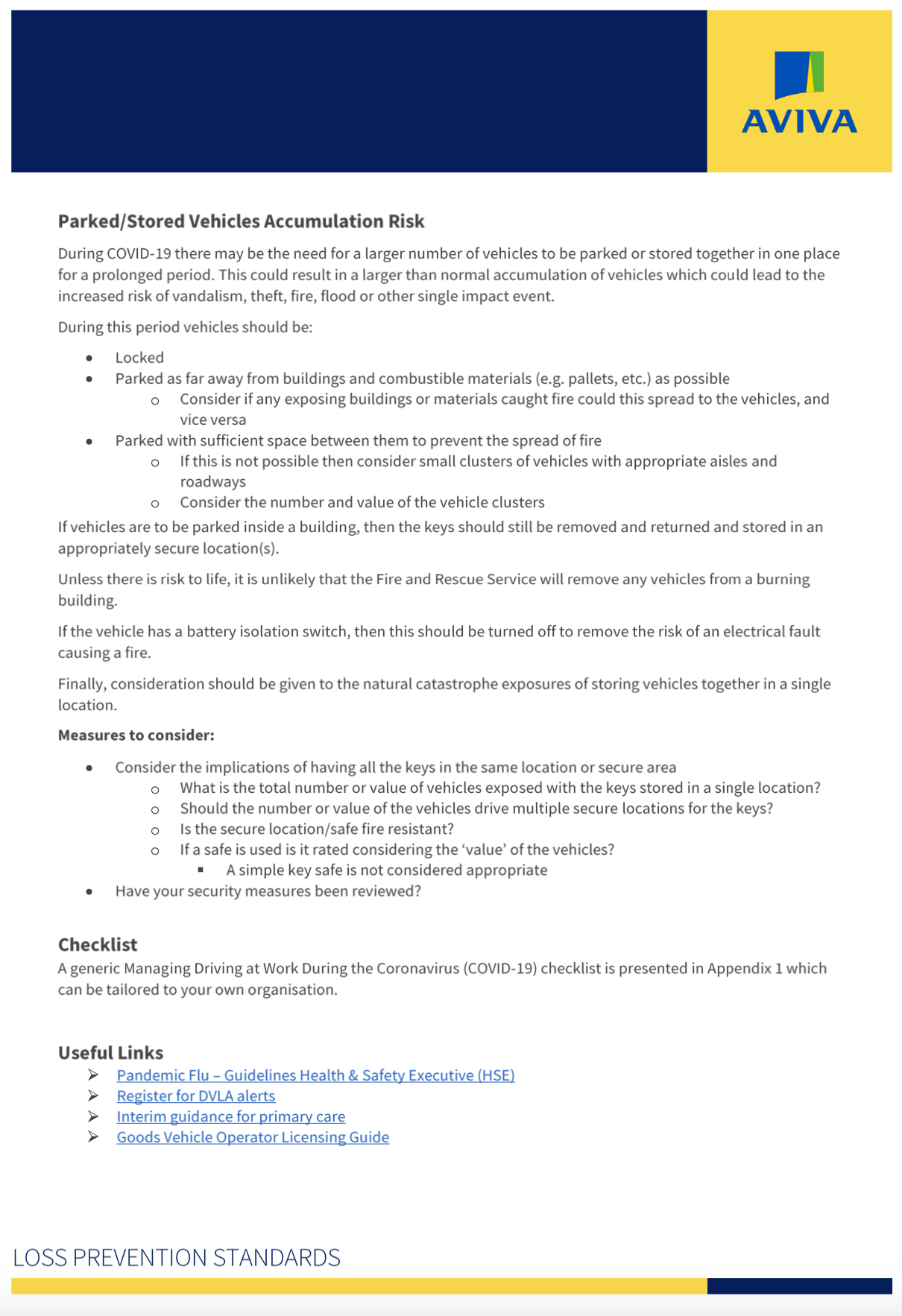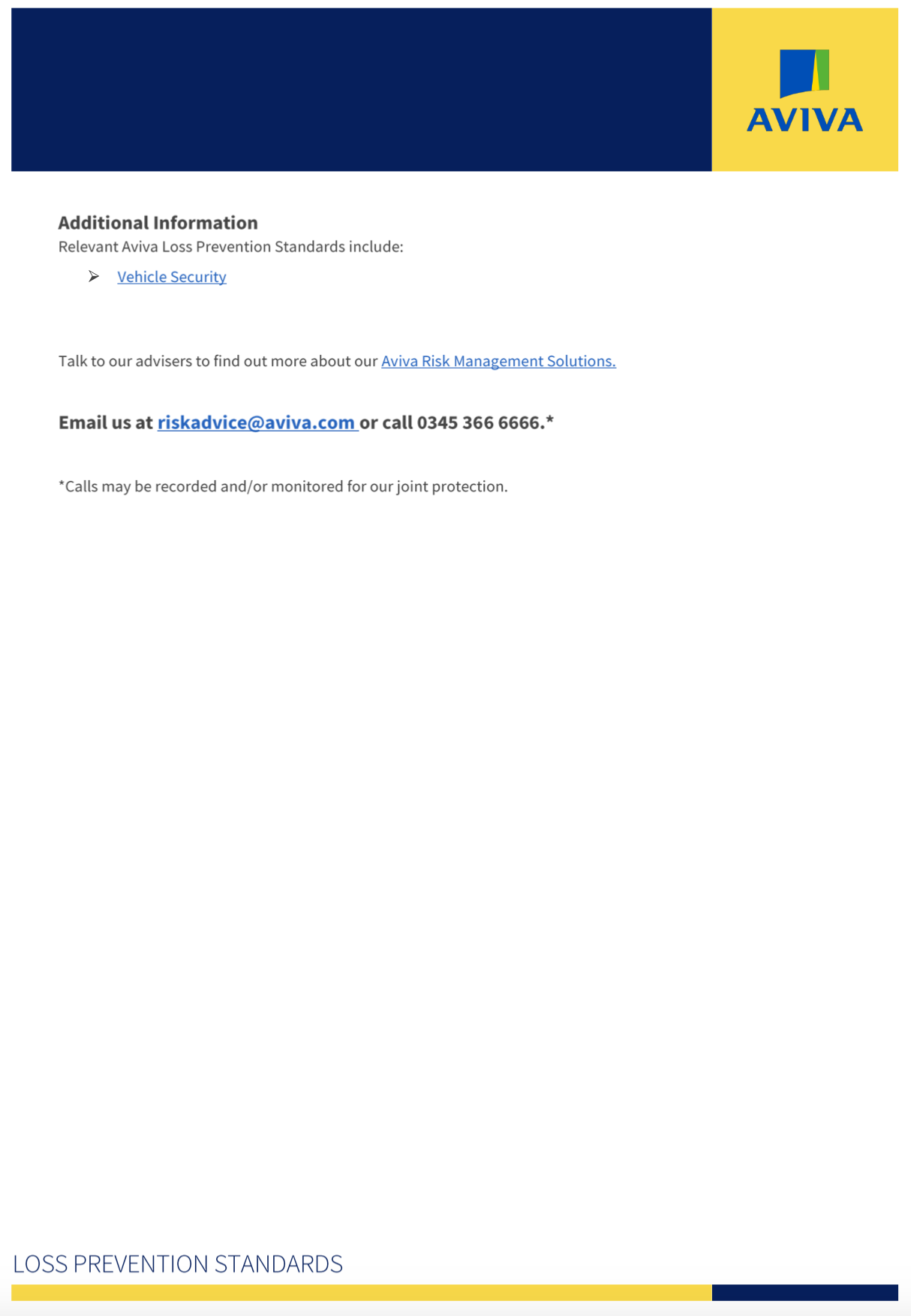Title Page
-
Conducted on
-
Prepared by
-
Location
-
Loss Prevention Standards (OFF to remove from print out)
Loss Prevention Standards
Driving at Work During COVID-19 Checklist
-
1. Have current driving at work normal operating procedures been reviewed in light of regulatory changes due to COVID-19?
-
2. Have communication channels been established to maintain sharing of changes and establishing connections with employees?
-
3. Have procedures been established to implement the changes to EU and GB drivers' hours?
-
4. Have the maintenance and safety inspections of your HGVs been maintained?
-
5. Are arrangements in place to monitor when the MOTs need to be completed before the Certificate of Exemption expires?
-
6. Do you continue to comply with your Operating Licence agreed inspection timescales?
-
7. If you need to change inspection timescales have you informed the Traffic Commissioner?
-
8. Have drivers and their representatives been consulted on the working amendments due to the changes to EU and GB drivers' hours?
-
9. Have you registered to Government COVID-19 sites and the Traffic Commissioner to receive updates?
-
10. Have driver recruitment and selection procedures been maintained?
-
11. Have hygiene protocols been established and communicated for:<br><br>• Premises?<br>• Supply chain sites?<br>• Drivers?<br>• Vehicles?
-
12. Have delivery procedures and site delivery assessments been reviewed to accommodate:<br><br>• Change of routes?<br>• Sharing of sites?<br>• Sharing of vehicles?<br>• Sharing of employees?<br>• Voluntary work?<br>• Different delivery times?<br>• Provision of sufficient lighting levels?<br>• Working with different types of loads?<br>• Working with customers with vulnerabilities?<br>• Working with consideration to residential areas?<br>• Completing slow manoeuvres safely in confined areas such as cul de sacs and the presence of vulnerable road users?
-
13. Have staff been made aware about the signs of fatigue and tiredness and how to manage them?
-
14. Have staff been made aware of the Drug and Alcohol policy, testing and support available?
-
15. Has Driver Distraction been discussed in regards:<br><br>• The causes and effects of driver distraction?<br>• Hazard anticipation?<br>• Undertaking good scanning techniques?<br>• Coping strategies?
-
16. Are RTC underlying and root causes identified and reviewed to establish impact of operational and COVID-19 changes?
-
17. Has the accumulation risk been considered and quantified for occasions where there is a larger than normal number of vehicles?
-
18. Has the new accumulation been notified to your broker and/or insurer?
-
19. Have the security implications of having a larger number than normal vehicles housed together been assessed?<br>Are additional remedial measures needed or planned?
-
20. Have the fire risk assessments been reviewed in light of having a larger number than normal vehicles housed together?
-
21. Is an additional physical security presence required:<br>• Full time, or for a short or temporary basis?<br>• Roving both day and night?<br><br>Are informal visits required by site personnel or management to supplement this?<br>
-
22. Are the vehicle keys housed or stored in a detached or remote secure location, appropriately arranged for the value or number of the vehicles?
-
23. Vehicle Storage:<br><br>• Are the vehicles stored as far away from buildings and combustible materials as possible? Ideally this should be at least 10m?<br>• Are the vehicles stored in groups with appropriate aisleways or breaks to minimise fire spread and assist firefighting?<br>• Is the area used to store vehicles considered to be vulnerable to flooding?<br><br>Is the removal of the vehicles to a less exposed location considered as part of any flood response plan?
Completion
-
Comments
-
Completed by: (Name and Signature)
-
Please Note:
This document contains general information and guidance only and may be superseded and/or subject to amendment without further notice. Aviva has no liability to any third parties arising our of ARMS' communications whatsoever (including Loss Prevention Standards), and nor shall any third party rely on them. Other than liability which cannot be excluded by law, Aviva shall not be liable to any person for any indirect, special, consequential or other losses or damages of whatsoever kind arising out of access to, or use of, or reliance on anything contained in ARMS' communications. The document may not cover every risk, exposure or hazard that may arise and Aviva recommends that you obtain specific advice relevant to the circumstances.
